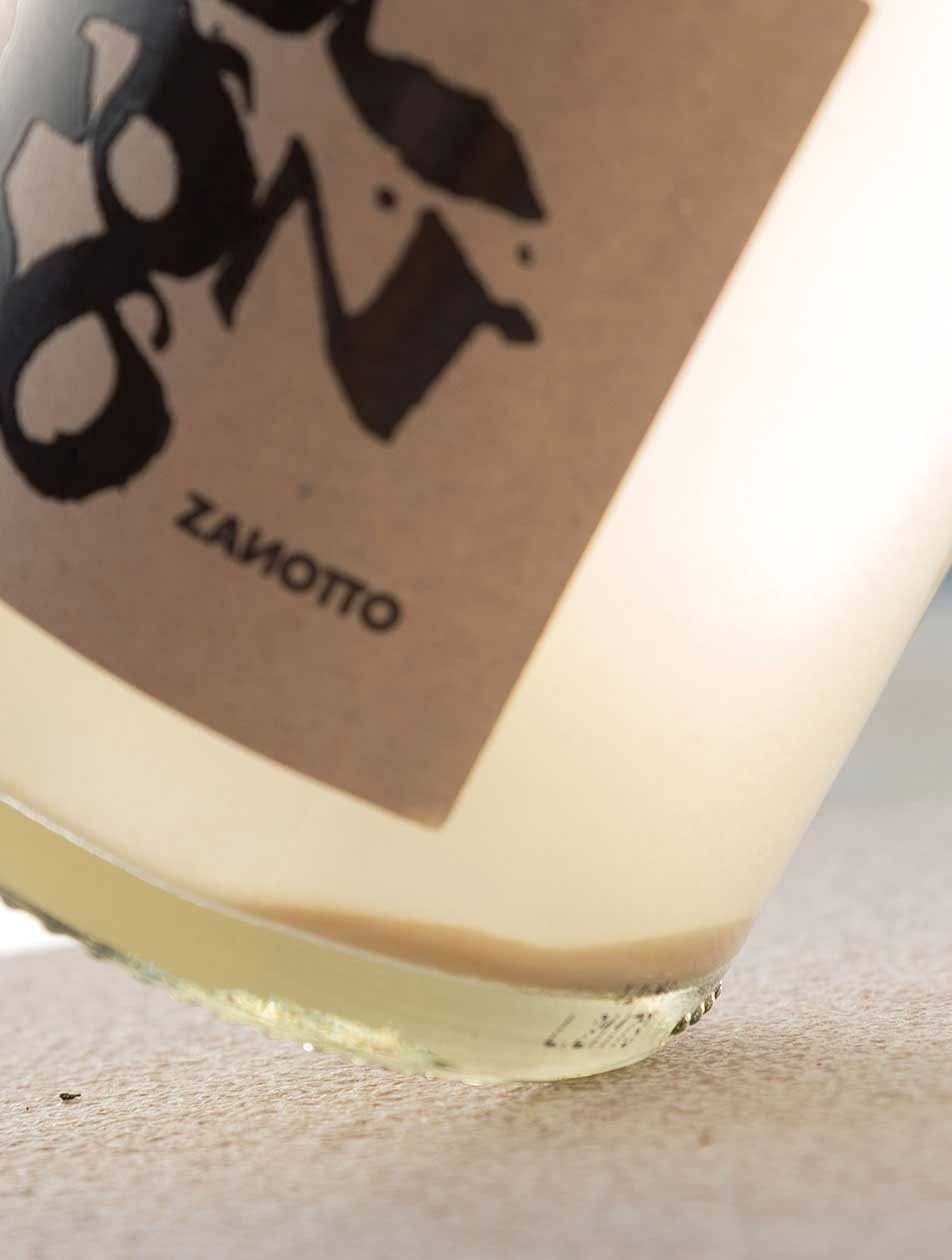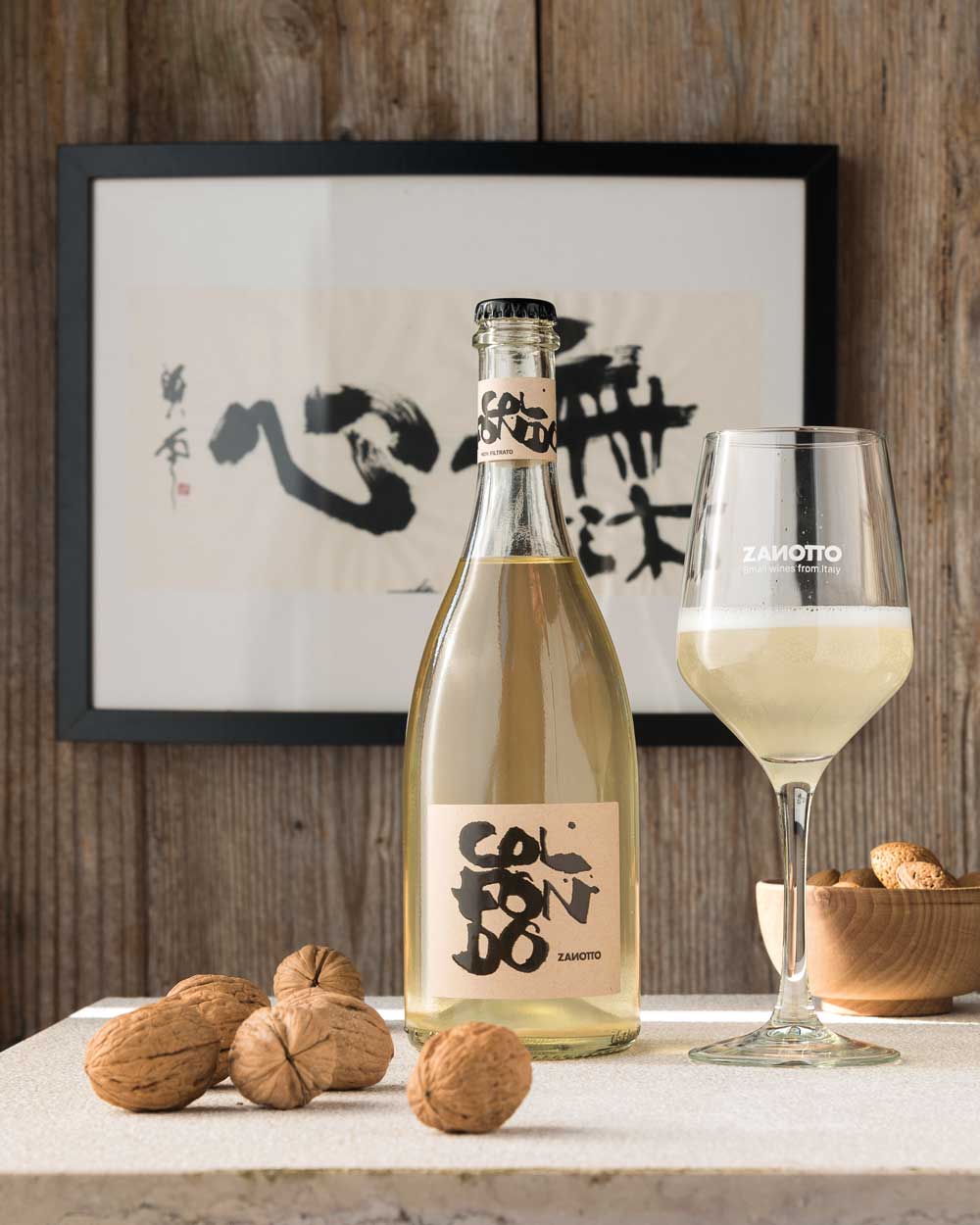Non sono presenti prodotti nel carrello.
Zanotto Col Fondo
Lightly-sparkling white wine
Second fermentation in the bottle
Ancestral method, unfiltered
11% vol – 750 ml
A lightly sparkling wine obtained from Glera grapes grown in hillside vineyards situated at 370 meters above sea level. It is produced using the bottle fermentation method (“Col Fondo” – on its lees), an ancestral practice that imparts a unique and authentic character. This unfiltered wine undergoes refermentation in the bottle during the spring, in the Easter period, following the cycle of the waxing moon to favor its natural vivacity. After bottling, it is ready to be enjoyed after a period of 60-90 days.
Pale yellow with greenish hues. The aroma recalls toasted bread crust with delicate notes of apple and citrus.
On the palate, the wine is dry, complex and pleasant with its typical notes of yeast and fruit. Lightly salty and very mineral on the finish.
Can be served clear by leaving the lees deposited or slightly opaque, with a slight shake of the bottle for a more rustic, decisive flavour.
Serving Temperature: 8° – 10° C
Unfiltered Wines by Riccardo Zanotto
To learn more
The Art of Drinking “Col Fondo”: Three Acts of a Sparkling Tradition
There was a time when “col fondo” wasn’t a trendy whim, but a simple, almost instinctive act, like breaking bread. In old taverns, it was one of the two wines served: still or sparkling with sediment, both born from the land and everyday labor.
First Act: Purity
Those who made it, the farmers who tended the vines, took the bottle – slightly cloudy, veiled by yeast – and handled it with care, without shaking it. They poured it into a glass carafe, the simple kind used in kitchens, far from the refined decanters of fancy parlors. They did it slowly, letting only the clear wine flow while leaving the murky sediment at the bottom of the bottle, a natural choice. A bow to simplicity.
Second Act: Rebellion
Then time shuffled the deck. The “connoisseurs,” new champions of “col fondo,” embraced the turbidity. They shake the bottle with a deliberate motion, as if awakening an ancient force, and pour the wine into wide glasses. Here, the yeasts come alive, releasing scents of bread crust, wildflowers, and earth after rain. It’s a rustic burst, a sip that tastes of a storm. A hymn to untamed nature.
Third Act: Freedom
And then there are those who choose neither one nor the other, but improvise. They uncork and pour, no rules, no waiting. Each glass is a gamble: the first, fresh and lively like a gust of wind; the last, thick and untamable like a memory that won’t fade. A toast to life’s surprises.
Three ways to drink “col fondo,” three ways to live. A rustic, honest three-act play where the wine is the narrator and the table the stage. Because “col fondo” isn’t just wine: it’s a story, an echo of distant days, a breath of a land that clings to its roots.

To learn more
Col Fondo: The Veneto Wine That Lives on Its Lees
In Veneto, among the hills where Glera reigns supreme, there’s a wine that defies the clarity of modern sparklers: “Col Fondo.” It’s a fizzy wine on its lees (also known as sur lie or pet nat), unfiltered, with that sediment that makes it unique and honest. A simple, straightforward cellar tradition that turns grapes into a lively fizz, to be enjoyed clear or cloudy, depending on your mood.
A Veneto Story, a Wine Without Filters
“Col Fondo” comes from an old custom: Veneto farmers would bottle their wine while it was still fermenting, letting it evolve with its natural yeasts. Most unfiltered “Col Fondo” wines are sealed with a crown cap, practical and true to tradition. Glera is almost always the star, but it’s not uncommon for winemakers to blend in other local varieties – Verdiso, Boschera, or Perera, for instance – to add a personal signature, a touch of character that reflects their vision.
No filtration, no fuss: the wine goes into the bottle with its “fondo” of lees, which can settle at the bottom or swirl in the glass if you give it a shake. It’s a fizz that changes, that grows, carrying scents of bread crust, apple, and a mineral freshness typical of these hills.
Col Fondo vs. Metodo Classico: What’s the Difference?
At first glance, it might remind you of the Metodo Classico – think Champagne or Franciacorta – since both rely on a second fermentation in the bottle. But that’s where the similarities end. In the Metodo Classico, the yeasts do their job and are then removed through disgorgement: the wine emerges clear, refined, with fine, precise bubbles. It’s a meticulous, almost surgical process.
“Col Fondo,” on the other hand, keeps its yeasts close. No disgorgement here: the sediment stays, giving the wine a softer texture and gentler bubbles. If Metodo Classico is a polished wine, “Col Fondo” is rougher, more straightforward, with a taste of earth and living yeast. It’s less predictable, and perhaps that’s what makes it so intriguing.
The Veneto Charm of the “Fondo”
In a world of flawless sparklers, “Col Fondo” stands out as a delightful exception. It’s not just about the taste – dry, lively, with that salty finish that echoes the breeze of Veneto’s hills – but about identity. Here, where tradition meets the creativity of winemakers, each bottle is a small act of defiance against standardization. Whether it’s 100% Glera or enriched with local grapes, sealed with a crown cap or, as in the Prosecco DOCG area of Conegliano and Valdobbiadene, topped with a mushroom cork, cage, and the Consorzio’s band, “Col Fondo” remains a wine for those seeking something real – a sip that speaks of soil, time, and skilled hands.




